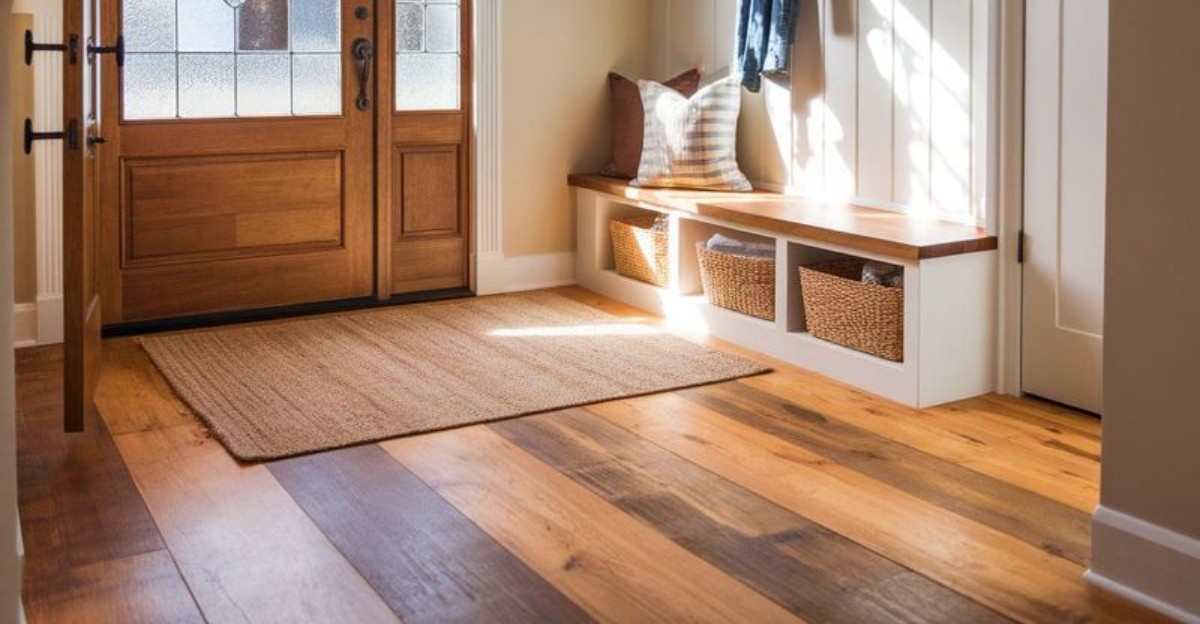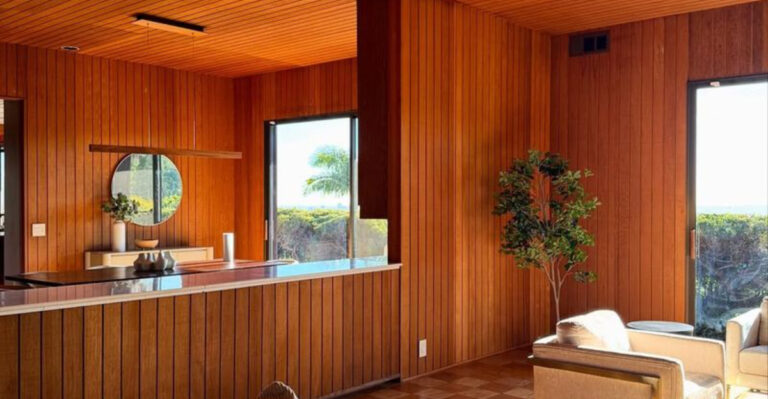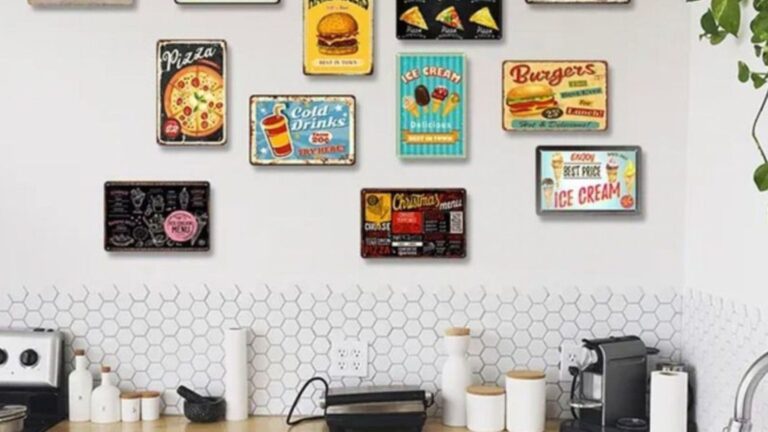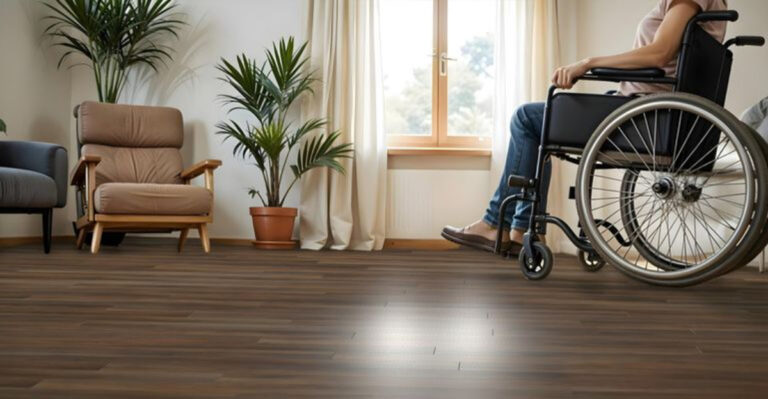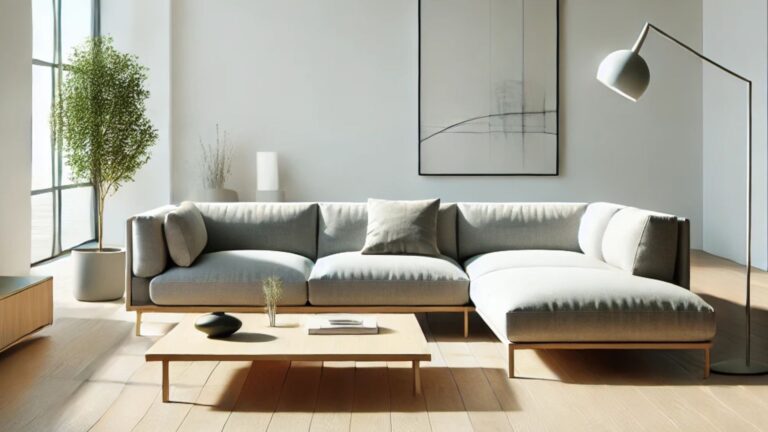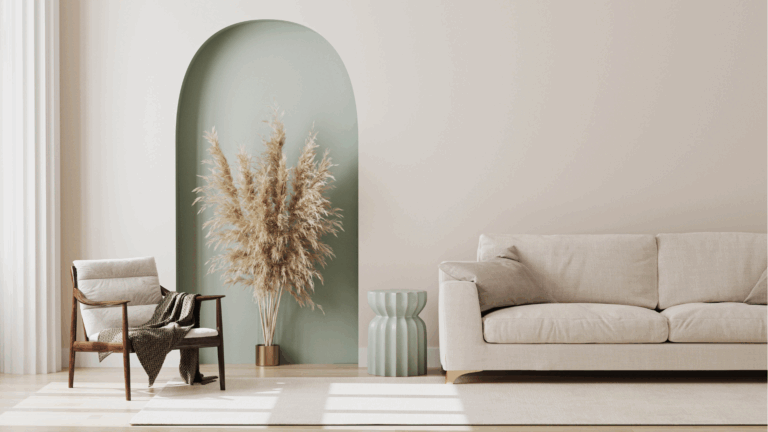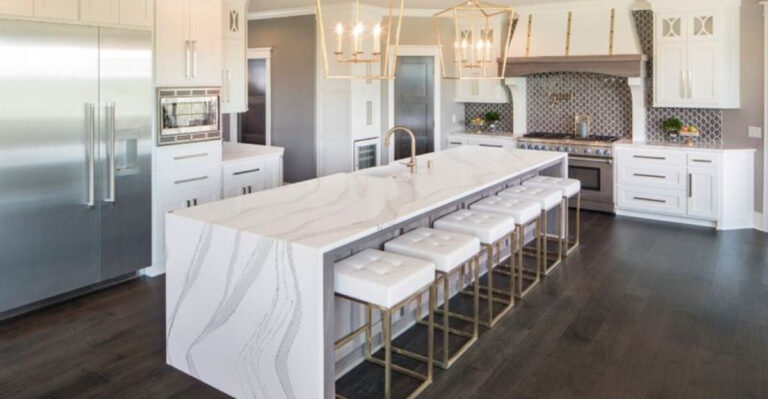15 Things To Always Include When Decorating Entryway According To Interior Designers (Plus 5 Secret Tips)
I used to overlook my entryway until I realized it is the first thing people see when they step inside. Now I think of it as the handshake of my home.
Interior designers have this down to a science, blending style with practicality to make that first impression really count. No matter if you have a sweeping foyer or a tiny apartment nook, the right elements can completely transform the space.
I have picked up a few tricks along the way and these expert-approved tips will help you turn your entryway from bland to brilliant too.
1. Statement Mirror That Commands Attention
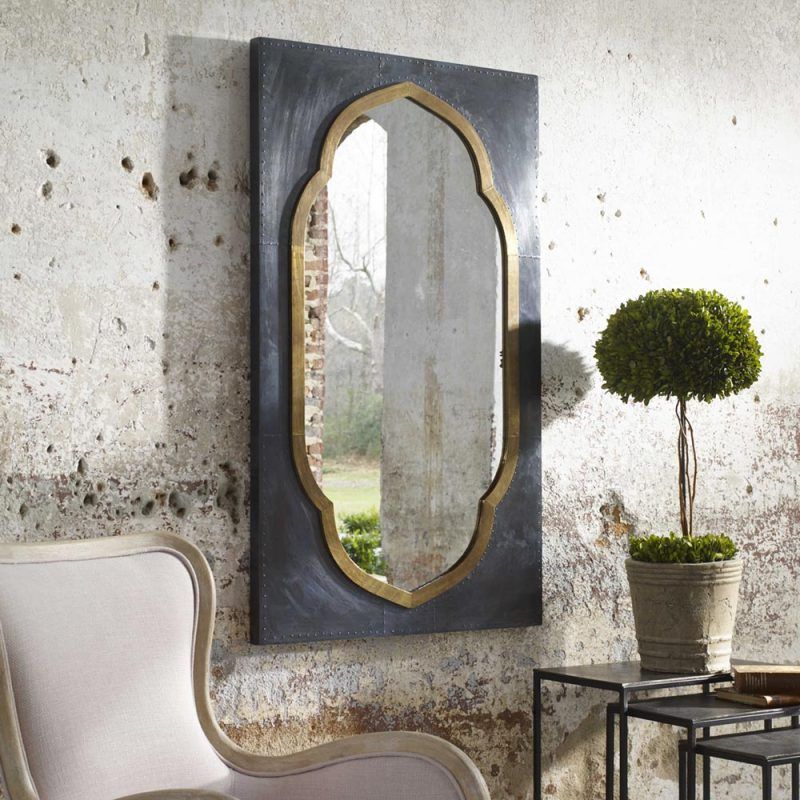
Mirrors work magic in entryways by bouncing light around and making cramped spaces feel twice as large. Pick something with personality rather than settling for basic bathroom mirror vibes.
Round mirrors soften sharp corners while rectangular ones complement modern homes perfectly. Position yours at eye level so everyone gets a final look before heading out the door.
Bonus points if your mirror doubles as wall art with an interesting frame or unique shape that starts conversations.
2. Functional Storage That Actually Works
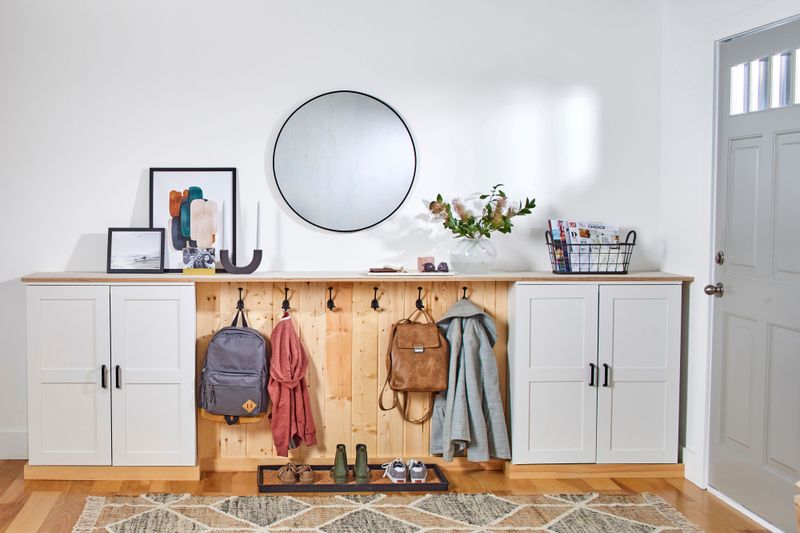
Nobody wants their entryway looking like a tornado hit a clothing store. Smart storage keeps everything from backpacks to dog leashes in their proper places.
Built-in cubbies work wonders for families while floating shelves suit minimalist styles better. Consider your daily routine when choosing between open storage and hidden compartments.
Remember that storage should match your lifestyle, not fight against it every single day you walk through that door.
3. Lighting That Sets The Perfect Mood
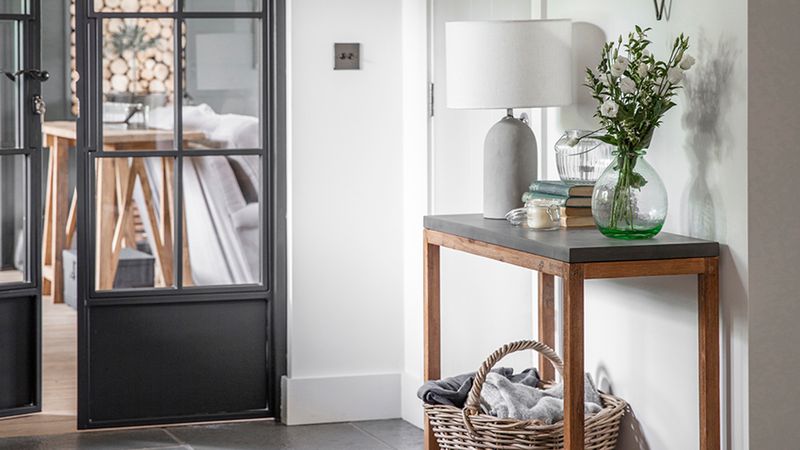
Good lighting makes everyone look better and feel more welcome when they step inside your home. Harsh overhead bulbs create unflattering shadows that nobody appreciates.
Layer different light sources like table lamps, sconces, or pendant lights for maximum flexibility. Dimmer switches let you adjust brightness depending on time of day.
Warm light temperatures around 2700K create cozy atmospheres while cooler tones work better for task-focused areas.
4. Seating For Shoe Struggles And More
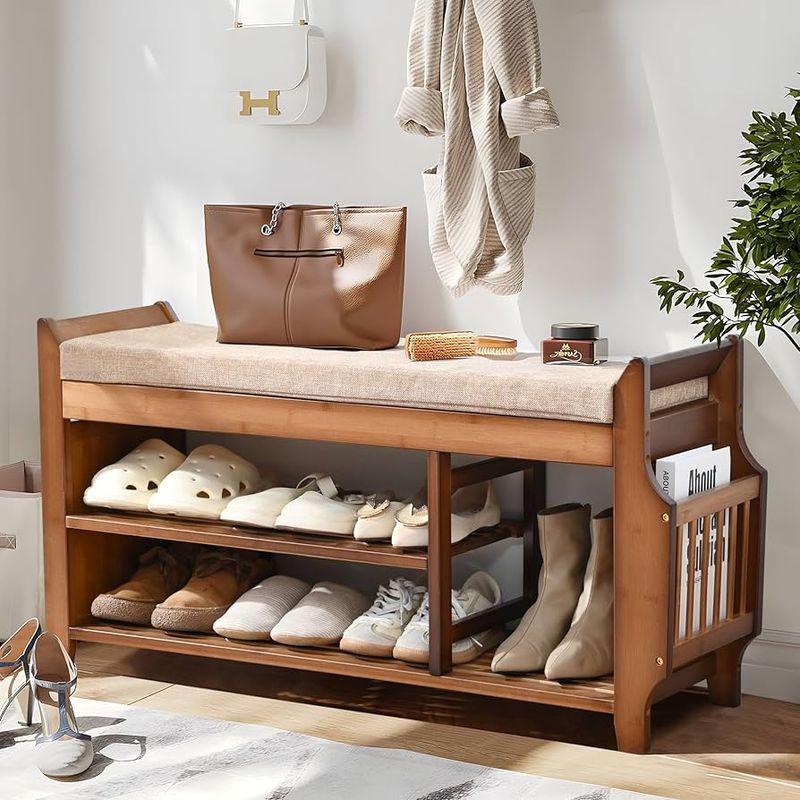
Ever tried putting on boots while hopping around on one foot? Seating in your entryway eliminates those awkward shoe-changing dances completely.
Benches with hidden storage are your best friends, providing comfort plus organization. Ottoman-style seating works great in smaller spaces too.
Choose materials that can handle daily wear since this spot gets more action than most furniture pieces in your house.
5. Hooks That Keep Coats Off The Floor
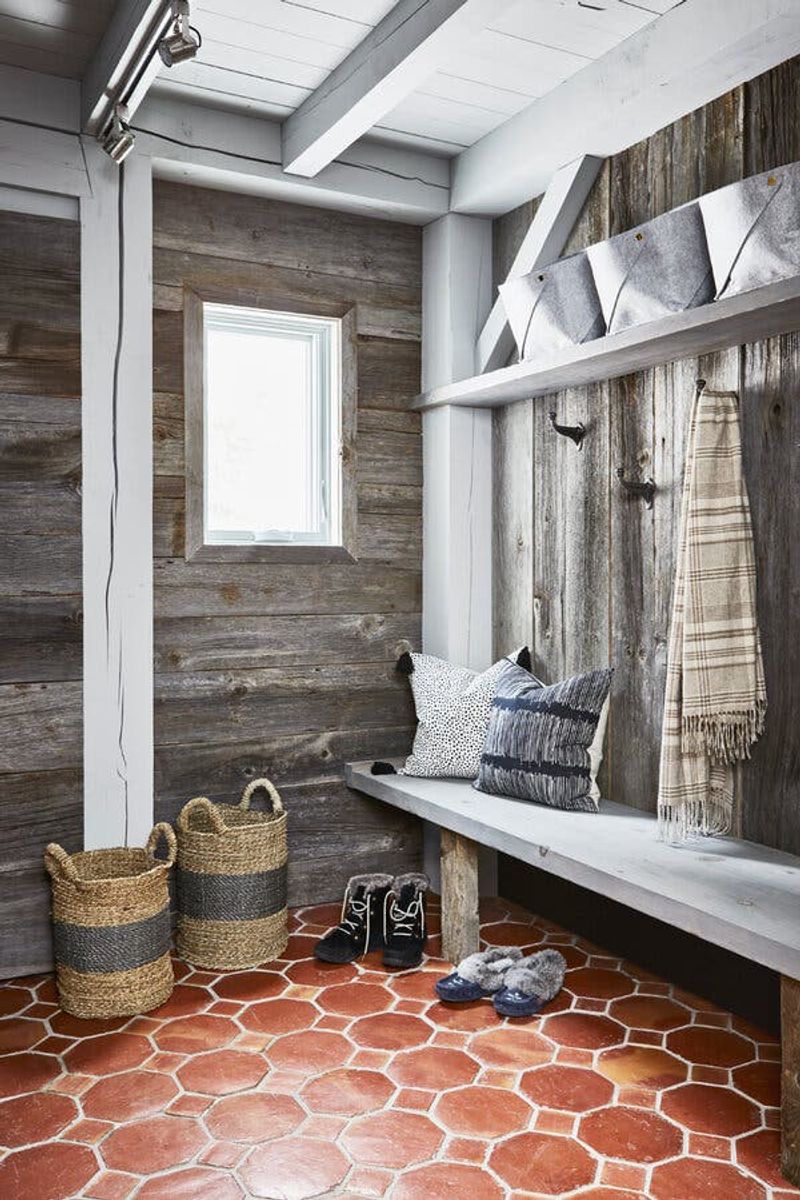
Coat closets sound nice in theory but most people grab the nearest hook when rushing out the door anyway. Embrace this reality with attractive wall hooks.
Install them at different heights so kids can reach their own gear without playing climbing games. Mix hook styles for visual interest rather than matching everything perfectly.
Space hooks far enough apart so thick winter coats don’t create crowded messes that make finding anything impossible.
6. Rugs That Welcome And Protect

Rugs in entryways work harder than any other floor covering in your house, dealing with wet boots and muddy paws daily. Choose accordingly.
Natural fiber rugs like jute handle moisture better than synthetic options that hold onto odors. Darker patterns hide dirt between cleaning sessions too.
Size matters here since tiny rugs look lost while oversized ones create tripping hazards when people rush through doorways.
7. Plants That Thrive In High Traffic
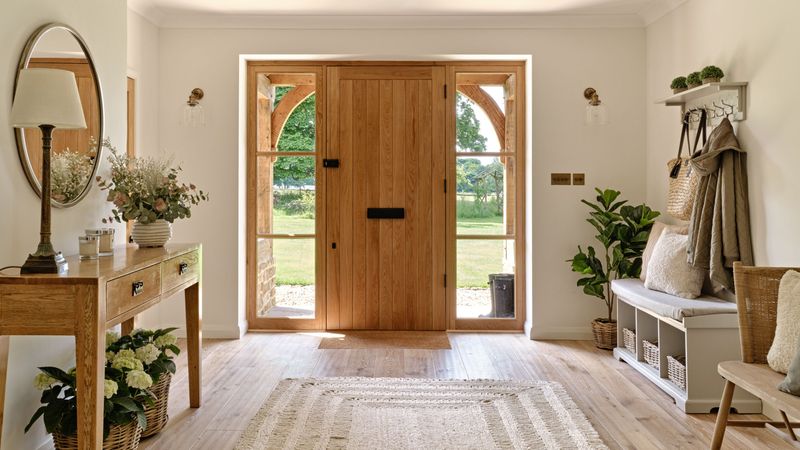
Plants instantly make spaces feel more alive and welcoming, but entryways present unique challenges with temperature changes and varying light conditions.
Snake plants and pothos tolerate neglect better than fussy orchids that sulk when conditions aren’t perfect. Artificial plants work too if your space lacks natural light.
Group different sized plants together for more visual impact than single lonely specimens sitting by themselves.
8. Art That Reflects Your Personality
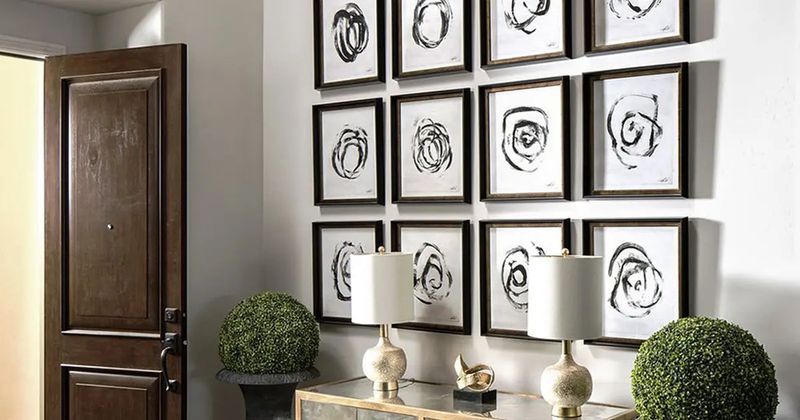
Blank walls in entryways feel cold and unwelcoming, like walking into an office building instead of someone’s home. Art fixes this instantly.
Gallery walls work great if you have lots of smaller pieces while single large artworks make bold statements. Family photos mixed with other art create personal touches guests appreciate.
Hang artwork at eye level and remember that entryways often have unique lighting that affects how colors appear.
9. Console Tables For Daily Essentials
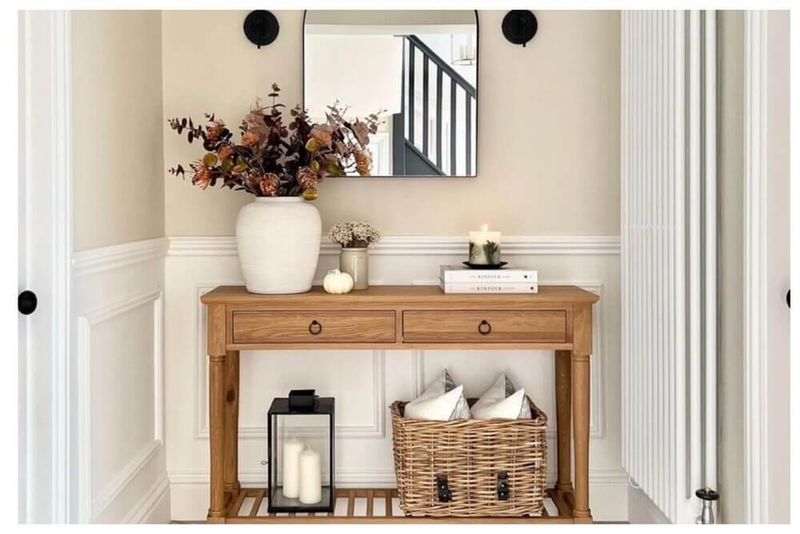
Console tables provide landing spots for keys, mail, and all those random items that somehow accumulate near front doors every single day.
Narrow profiles work best since entryways need clear walking paths for safety. Look for tables with drawers or shelves for hidden storage opportunities.
Style the top with a mix of functional items like key bowls and decorative pieces that make the space feel intentional.
10. Proper Ventilation For Fresh Air

Entryways trap odors from wet shoes, damp coats, and outside air that follows people inside. Good ventilation prevents your entrance from smelling musty.
Ceiling fans help circulate air while exhaust fans remove moisture more effectively. Opening windows when weather permits provides natural air exchange too.
Consider the airflow patterns in your space since some ventilation solutions work better than others depending on your home’s layout.
11. Durable Flooring That Handles Everything
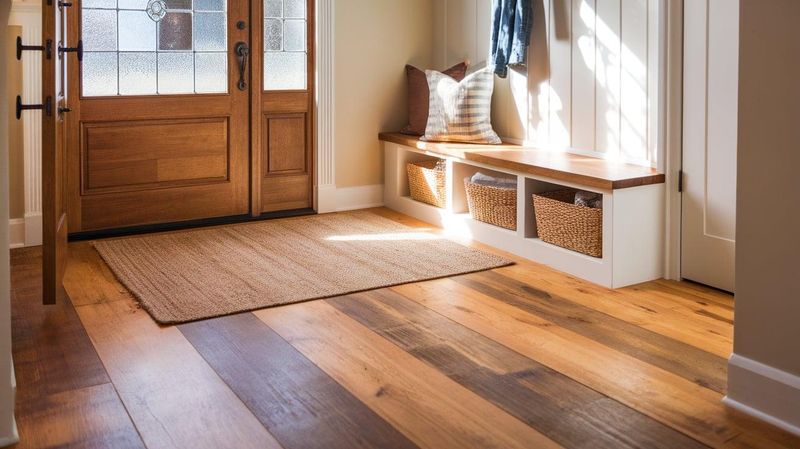
Entryway floors endure more abuse than any other surface in your house, from salt stains to pet accidents to tracked-in mud puddles.
Tile and luxury vinyl handle moisture better than hardwood or carpet that can warp or stain permanently. Textured surfaces provide better traction when wet.
Choose flooring that transitions well to adjacent rooms since abrupt changes look awkward and create tripping hazards for guests.
12. Temperature Control For Comfort
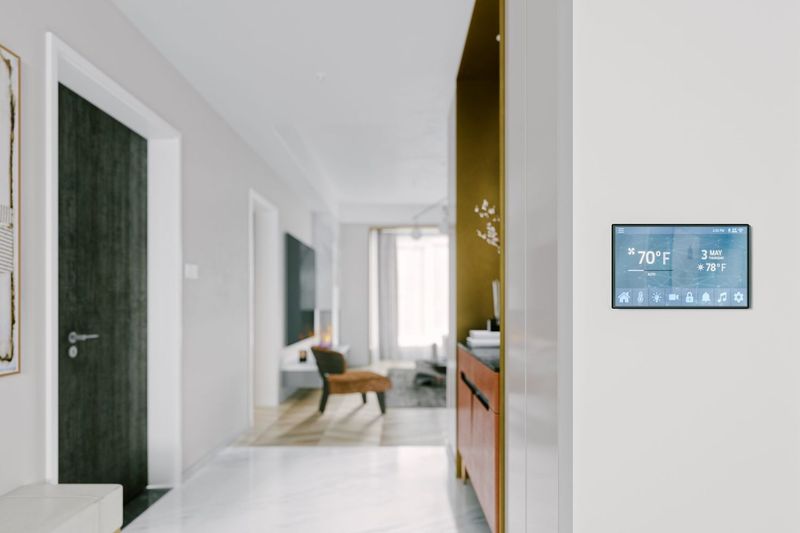
Entryways often feel like different climate zones from the rest of your house, especially when doors open frequently during busy periods.
Proper insulation around doors and windows prevents energy waste while small space heaters can warm up chilly mudrooms quickly. Ceiling fans help distribute conditioned air better.
Consider your local climate when planning since humid areas need different solutions than dry or cold regions require.
13. Color Schemes That Flow Seamlessly
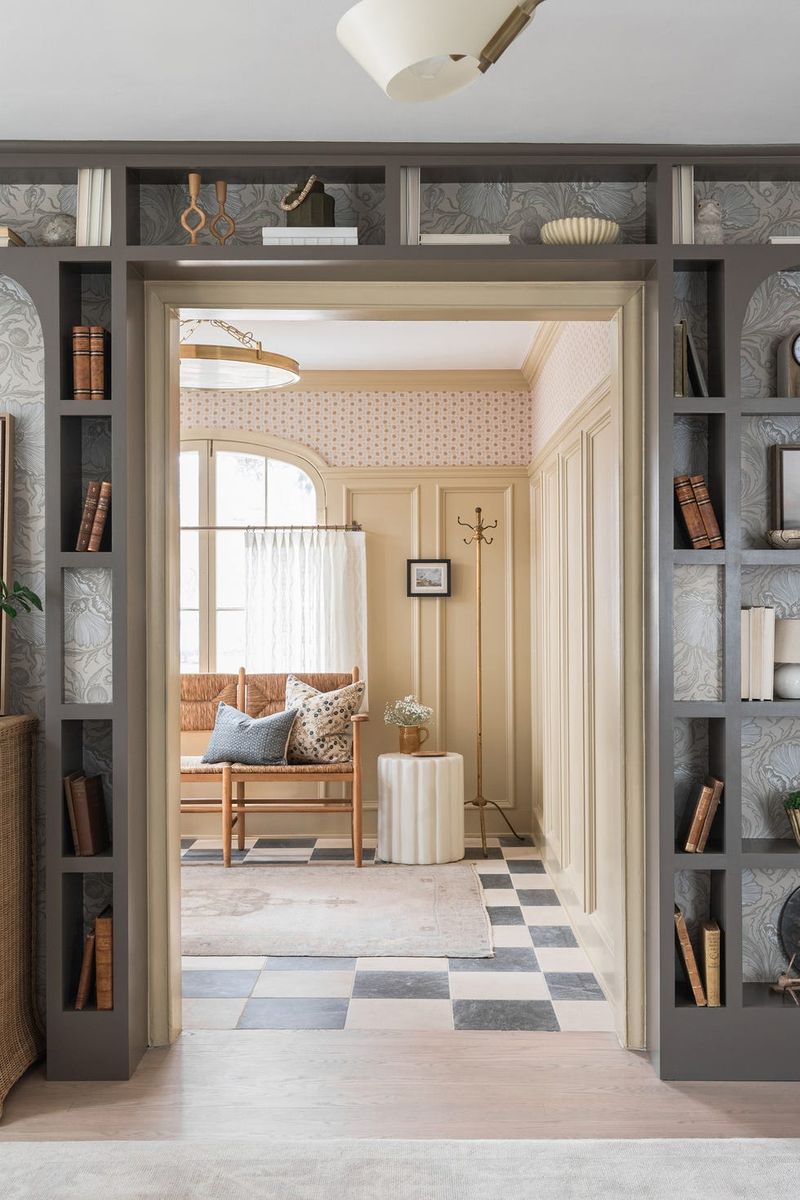
Colors in your entryway should connect to the rest of your home rather than feeling like a completely separate space that belongs elsewhere.
Neutral bases work well with accent colors that appear throughout your house. Bold colors can work too if you commit to carrying them into other rooms.
Test paint colors in different lighting conditions since entryways often have unique natural light patterns that affect color appearance.
14. Security Features That Provide Peace Of Mind

Modern entryways benefit from security upgrades that protect your family while maintaining style and convenience for daily use.
Smart doorbells let you see who’s visiting even when you’re not home. Keyless entry systems eliminate lost key problems while backup power ensures access during outages.
Choose security features that match your lifestyle since complicated systems often get ignored when people are rushing around.
15. Personal Touches That Tell Your Story

Generic entryways feel like hotel lobbies rather than welcoming homes where real people live and create memories together daily.
Display collections, family photos, or meaningful objects that start conversations with guests. Seasonal decorations keep the space feeling fresh and current.
Balance personal items with functional needs since entryways still need to work for everyday activities like getting ready.
16. Smart Technology Integration Done Right
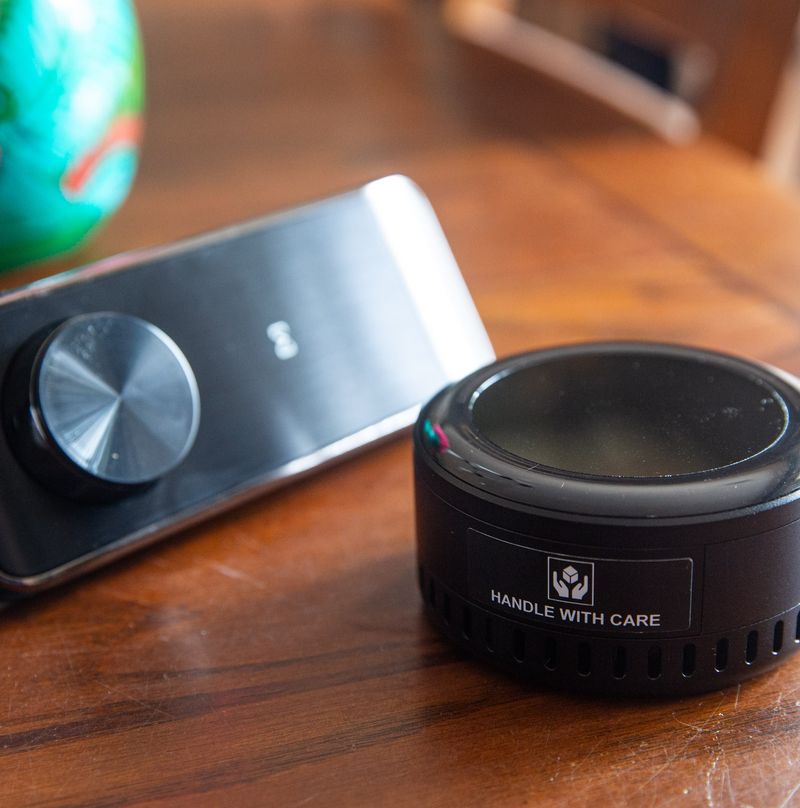
Smart home technology can enhance entryway function without creating complicated systems that frustrate family members trying to get out the door.
Voice assistants help with weather updates and reminders while charging stations keep devices powered up. Smart lighting adjusts automatically based on time of day.
Keep technology simple and reliable since broken smart features become annoying obstacles rather than helpful conveniences over time.
17. Seasonal Flexibility For Year-Round Function
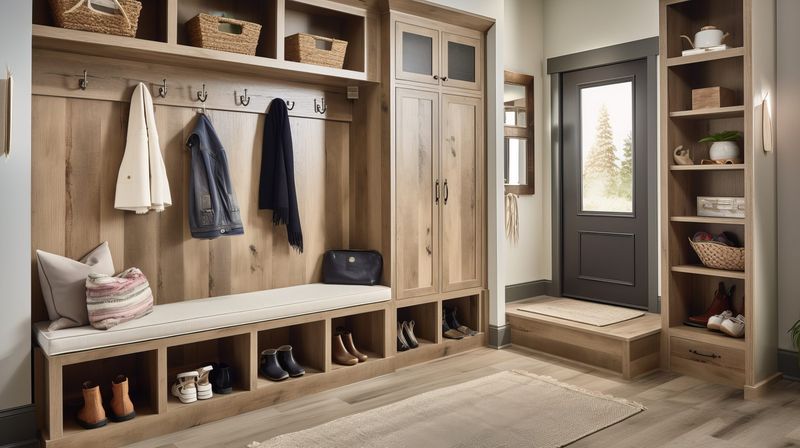
Your entryway needs change dramatically between summer sandals and winter boot seasons, requiring flexible storage and decoration approaches that adapt easily.
Removable storage bins work better than permanent fixtures for seasonal gear. Decoration systems that swap out quickly keep spaces feeling fresh without major renovations.
Plan for your area’s weather patterns since coastal homes need different solutions than mountain or desert climates require.
18. Professional Organization Systems That Actually Work
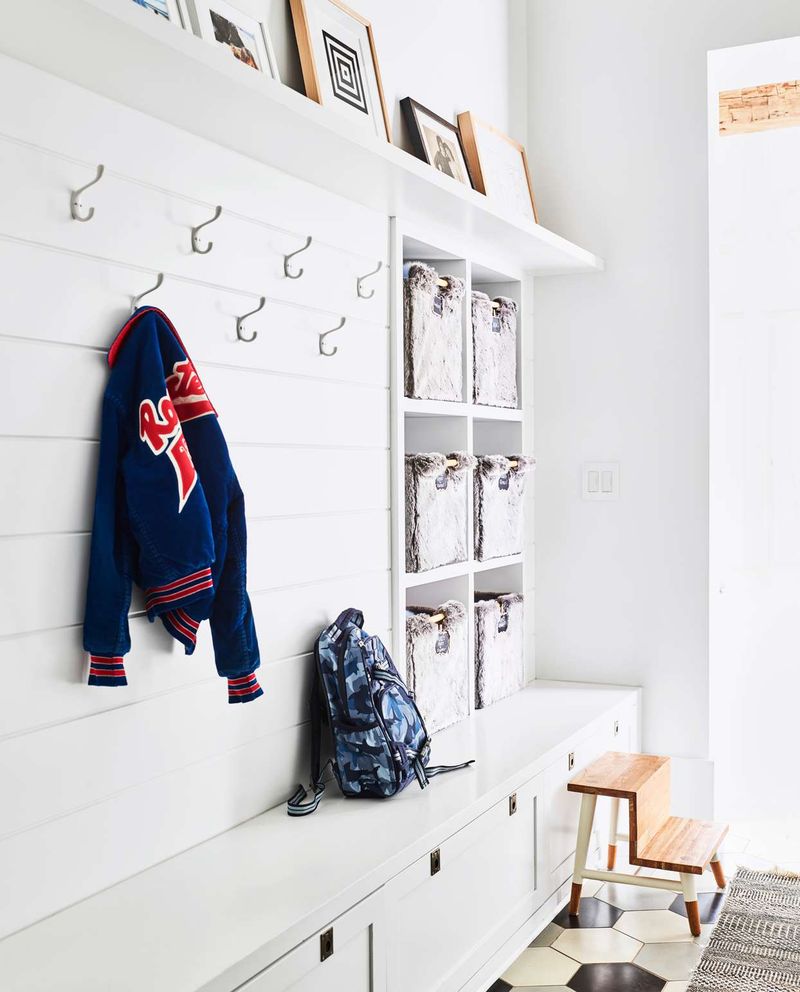
Organization systems only work when they match how your family actually lives rather than how organization magazines think you should live.
Label everything clearly so family members know where items belong. Create designated spots for each person’s daily essentials like backpacks and keys.
Start simple and add complexity gradually since overwhelming systems get abandoned quickly when life gets busy or stressful.
19. Lighting Layers For Every Situation

Single overhead lights create harsh shadows and unflattering illumination that makes your entryway feel more like an interrogation room than welcoming space.
Combine ambient lighting with task lighting and accent lights for flexibility. Table lamps provide warm pools of light while sconces highlight artwork effectively.
Install dimmer switches so you can adjust brightness for different times of day and various activities happening in the space.
20. Future-Proof Design Choices That Last

Trendy entryway designs look dated quickly while classic approaches maintain appeal for years without requiring expensive updates every few seasons.
Invest in quality materials and neutral color schemes that work with changing decor styles. Choose fixtures and furniture with classic proportions rather than trendy shapes.
Plan for changing needs as your family grows or lifestyle shifts since good design adapts rather than requiring complete overhauls.

